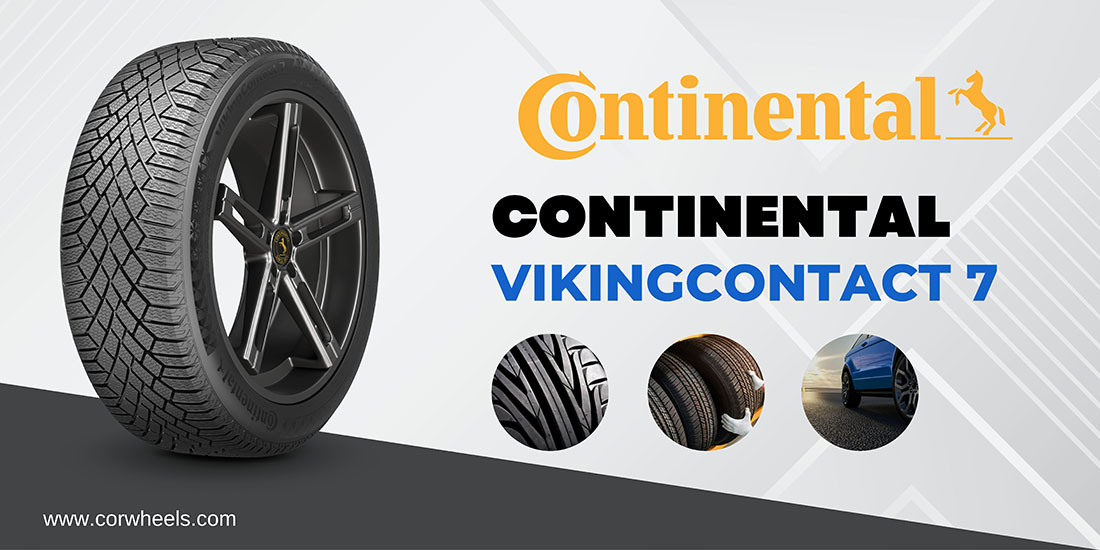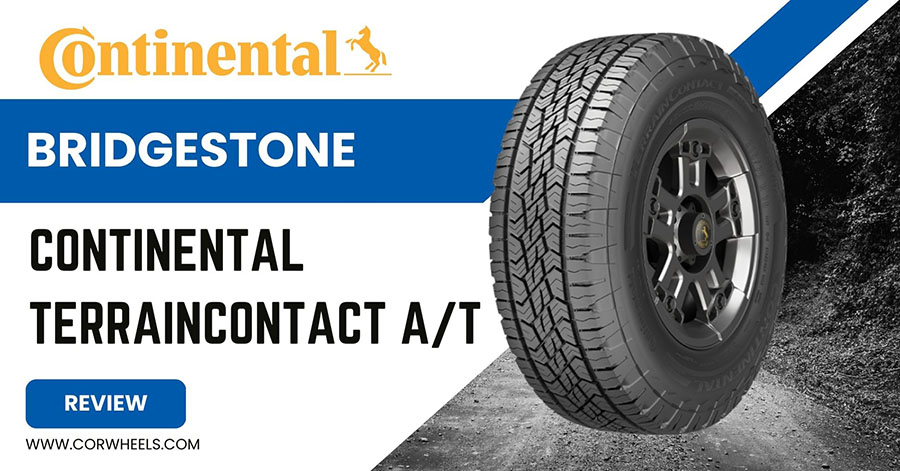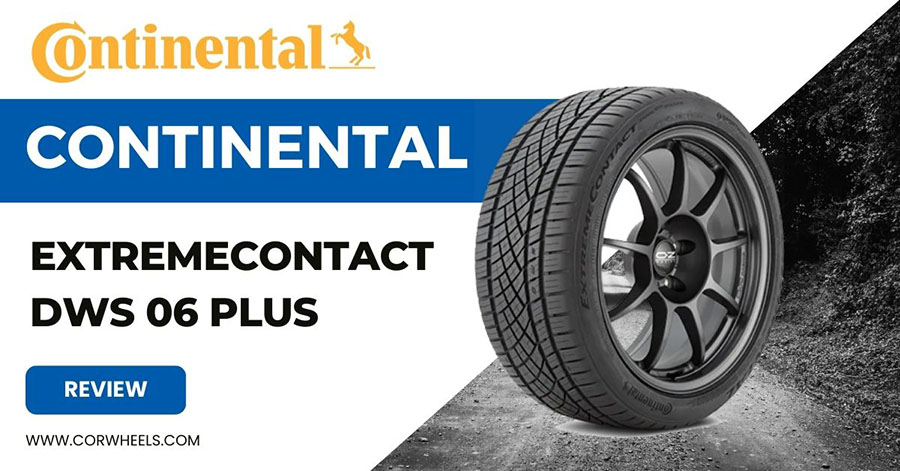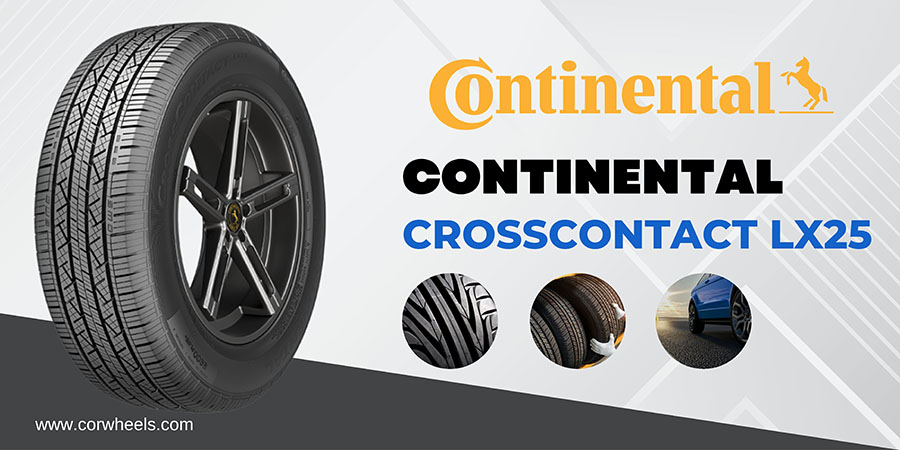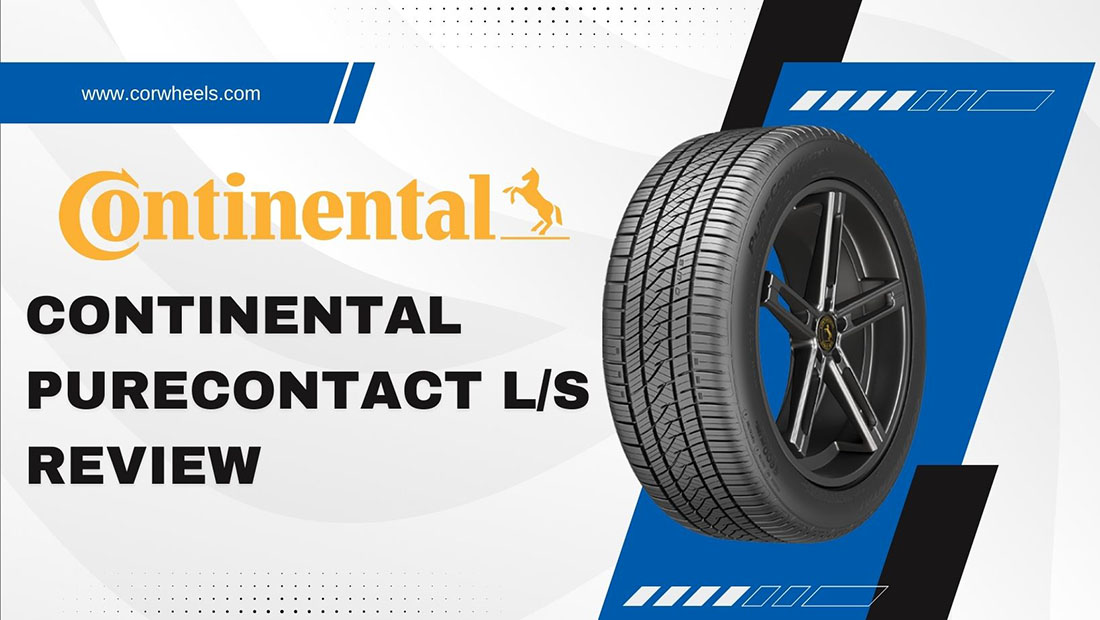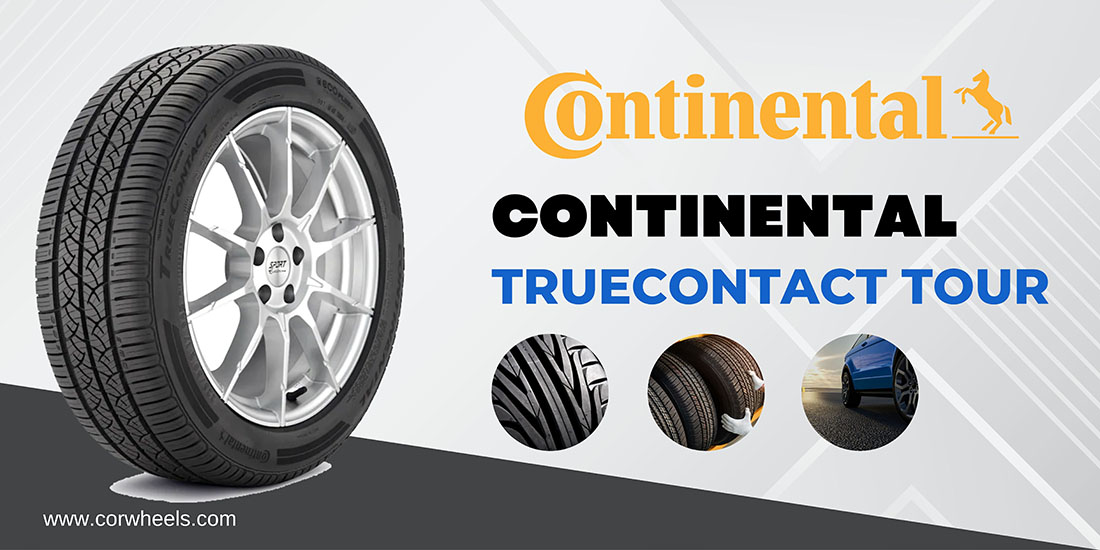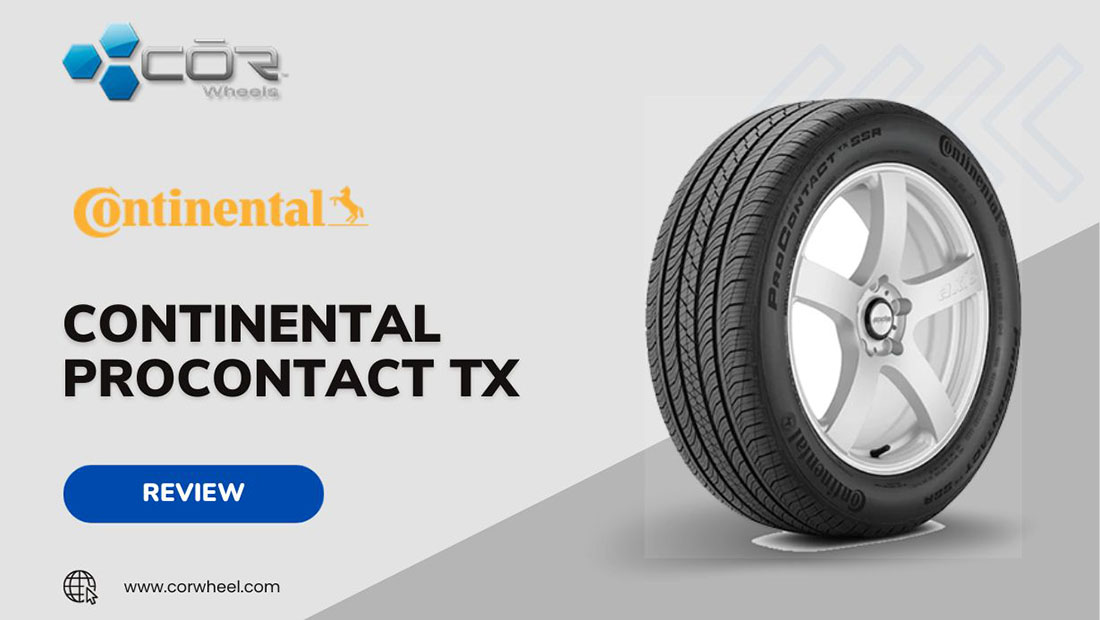Continental has consistently pushed the boundaries of tire technology, striving to provide drivers with top-notch performance and safety. Their dedication to excellence is particularly apparent in the competitive arena of winter tires with the VikingContact 7 being one of their best-performing tires.
With so many options available, it can be overwhelming for you to determine which one truly stands out. That’s where our thorough and candid reviews come in, helping you decide whether this premium winter tire is the perfect fit for your needs.
In this review:
VikingContact 7 Specifications & Features
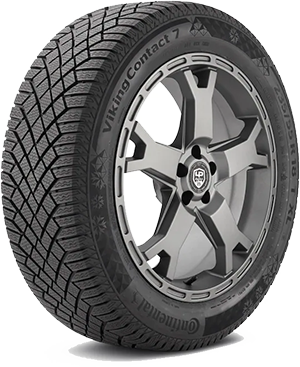
| Tire Type | Winter/Snow |
| Tire Size | 15″ – 22″ |
| Weight | 13.0 LBS – 41.0 LBS |
| Load Index | 72 – 117 |
| Load Range | SL - XL |
| Speed Rating | – H: up to 118 mph – T: up to 118 mph |
| Warranty | none |
| Ratings | 8.6/10 |
At the forefront of this tire’s technology package is ContiSeal. When sharp objects threaten the tire’s integrity, this system comes to the rescue.
Instead of facing an immediate flat or detrimental damage to the tread, the Contiseal system steps in, filling any punctures with a sticky sealant within the tread area. If you often find yourself on rugged terrains or distant stretches, this feature promises less immediate tire replacements.
Then there’s the ContiSilent feature. Inside the tire is a polyurethane foam absorber. It’s tasked with dampening the road noise, ensuring it doesn’t seep into the driving cabin.
Continental suggests this feature could reduce noise levels by a lot. And importantly, this foam is also built to last. It’s not supposed to be easily affected by sharp objects or extreme temperatures.
SSR, another tech integration, aims at reducing the aftermath of those unintentional run-ins with the sidewalk. Not only does it minimize the tire’s damage, but it also ensures the curb remains unscathed.
On the rubber compound side, the VikingContact 7 incorporates canola oil, ensuring the tire remains agile and adapts seamlessly to snowy or icy challenges. The Active Grip Silica compound can also boost performance on wet roads of this snow tire.
Continental VikingContact 7 review & Performance Test Results
For our 2023 COR Wheels Tire Test, our 2016 Honda Civic wore VikingContact 7 tires of size 225/45R17. Rather than only laser focus on winter performance, we also assessed its performance in summer during June and July.
Dry Performance: 8.4/10
Dry Traction: 8.6/10
We were pleasantly surprised by this premium tire’s grip on dry pavements. It’s by no means close to the capabilities of top non-winter tires. But it’s clear that Continental has balanced this winter tire’s capabilities without major compromises in its dry road performance.
On the highway, these tires will grip the surface well and give you assured confidence. We tested their dry braking capability by accelerating to 50 mph and then making a hard stop. The VikingContact 7 managed to bring the car to a complete halt in just about 96 feet.
Like its acceleration traction, this distance is acceptable even when compared to some of the summer tires we’ve evaluated.
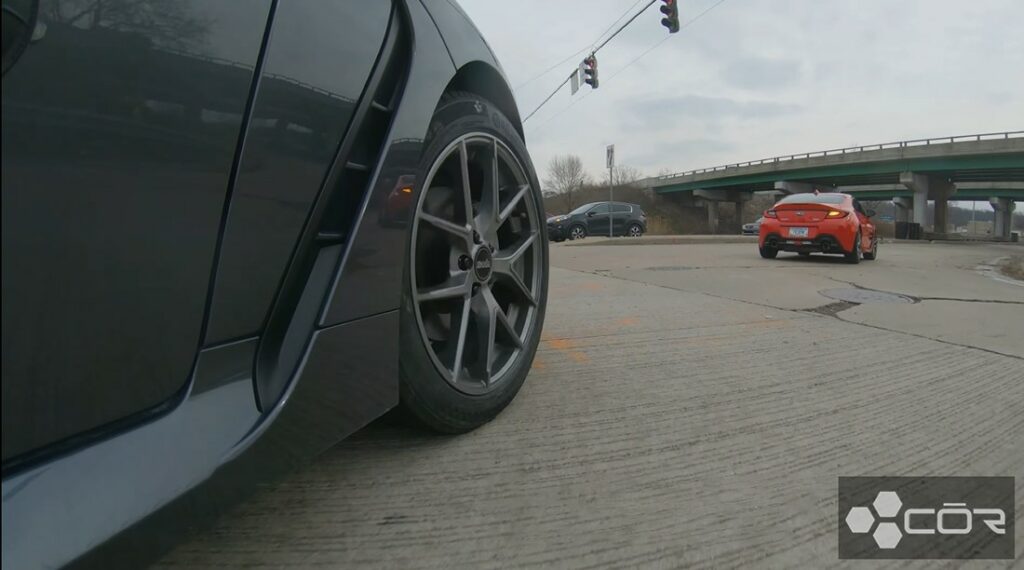
Corner Stability: 8.4/10
In challenging cornering scenarios, the tire consistently provided the same level of traction that exceeded what we’d typically expect from a winter tire.
We sped up to 60 mph and tackled a series of S-curves. Throughout the sequence, the tires consistently held their line. It offers you a secure and confident drive, marking itself as a solid choice for you across varied terrains.
While we wouldn’t place it on par with high-performance summer tires, its cornering stability, especially on highways, was more than satisfactory. But you can’t expect it to deliver smooth and punctual feedback at high speeds (60 mph onwards) on mountain paths with many U-pins in a row.
Steering Response: 8.3/10
During our professional tire tests, we encountered a mixed bag here. While the tire did deliver a natural and intuitive steering response in many situations, there were instances where it felt somewhat detached from the road.
At a brisk 65 mph, we tested rapid directional changes. The tire responded predictably, but the feedback through the steering wheel was slightly subdued.
This slight shortfall in steering feedback might not be noticeable for the everyday driver but can be more pronounced if you are accustomed to performance vehicles. So, if razor-sharp steering feedback is your thing, this Bridgestone tire might somewhat put you off.
Wet Performance: 8.5/10
Wet Traction: 8.5/10
The tire had a natural, almost intuitive grip on wet pavement, allowing for smooth acceleration from a standstill and reaching high speeds within moments. It gives you a balance and control feel living up to a top-tier non-winter tire, allowing for your confident maneuvers even in the most challenging conditions.
However, it’s worth noting that the wet braking distance and lateral traction weren’t at the very top of its class. We slammed the brakes at 50 mph on a long, straight segment of the track under heavy rain. The tire took a moment longer than some top performers like the Blizzak WS90 to bring the car to a complete halt.
The tire made an impressive comeback in our handling course, where it performed much better. It was this very resilience and versatility that proved the tire’s mettle in demanding wet conditions.
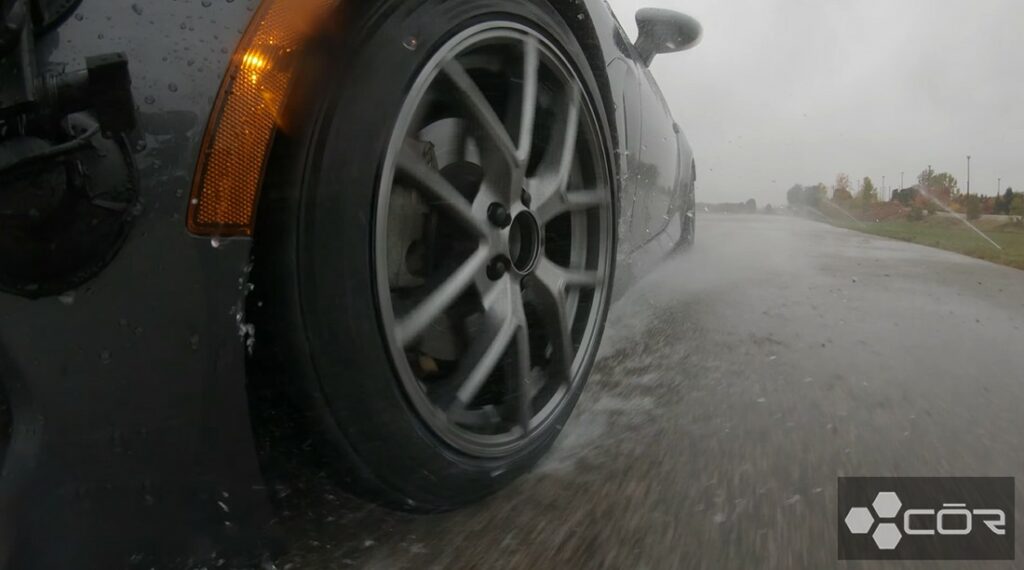
Hydroplaning Resistance: 8.5/10
If you live in regions with unpredictable rainy seasons or encounter slushy conditions often, this isn’t a bad workaround.
In our tests, even amidst heavy downpours and at elevated speeds, the tire’s hydroplaning resistance was remarkable.
We drove our Honda through sizable puddles, some as deep as 4 inches. The tire maintained a steadfast grip. There was a momentary sensation of floating, but the tire regained its grip almost immediately.
Winter and Snow Performance: 8.6/10
Light Snow Traction: 8.9/10
The VikingContact 7 displayed a superb traction on a light 5-inch dusting of snow topping our test track. The balance of snow traction was more than good, leaning neither too much towards aggressive traction nor complete smoothness.
Starting from 0 to 25 mph, the tire displayed admirable grip. It enabled quick and stable acceleration on snow – impressive given the fluffy surfaces. On separate snow-covered roads with mild inclines, there was no backward sliding either, and we could comfortably smoothly climb to the top. The tire will even cut through more hard-packed snow, accompanying you through the harsh winter.
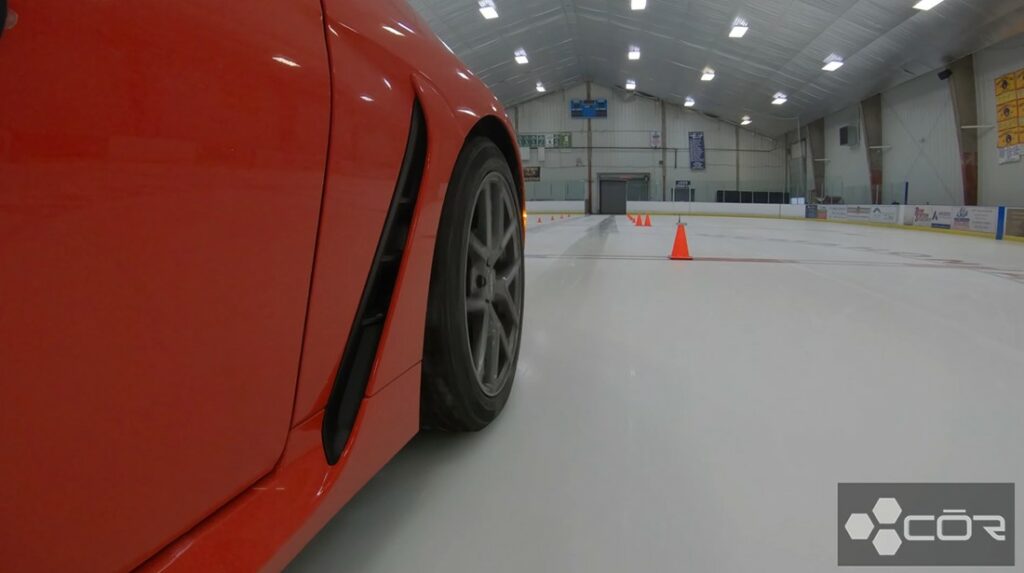
Deep Snow Traction: 8.6/10
In more challenging snowy conditions, the tire once again proved its worth.
We prepared a section with about 12 inches of accumulated snow and forged ahead into this deep pit. Despite the car being substantially submerged, the tires bit in and hauled it out without repeated attempts.
Even when we left the car for hours in a similar snow accumulation, the tires provided excellent traction and helped the car get unstuck swiftly.
Ice Traction: 8.2/10
The tire’s responsiveness and traction on ice was also noteworthy. While not the absolute best in its class for ice traction, the VikingContact 7 held its own.
Descending a mild icy slope at a steady 12 mph, we deliberately hit the brakes halfway down. The tires flaunted their grip on the slick surface and brought the car to a composed stop without swerving off the path. You can trust this tire to be your ally if you live in a region with extreme winter.
Comfort: 8.7/10
Ride Quality: 8.9/10
We felt that this studless winter tire 7 provided an admirable ride quality that set it apart in its category.
We intentionally drove through a series of potholes in our neighborhood at 25 mph to gauge the tire’s response. While the minor potholes were managed with ease, a larger, deeper pothole sent a distinct thump through the car. Such sudden jolts, while not unique to this tire alone, were noticeable but not overly intrusive.
At a speed of 50 mph on the highway, every time we passed over a joint, the VikingContact 7 absorbed the impact gracefully instead of giving us a sharp jolt. You will enjoy more of a soft thud rather than a harsh bump.
Noise: 8.5/10
On city streets and especially on rougher patches, the tire’s noise levels did increase. At a modest 35 mph, the expected crunch of gravel beneath the tires was evident.
Yet, you should know that even in such conditions, the VikingContact 7 was not the worst of the lot in terms of noise. The hum was subdued and rarely escalated to a roar that could be deemed disruptive or bothersome.
Treadwear and Durability: 8.4/10
After several hundreds of miles, there was barely any noticeable wear on the tire. The tread pattern remained sharp, and the sipes were still deeply etched. This was a reassuring start.
Fast forward to 300 miles, when the VikingContact 7 had been put through its paces in both mild and severe wintry conditions. Surprisingly, the wear remained minimal, with only a slight reduction in tread depth. The tire continued to grip confidently and showed no signs of deteriorating performance.
However, keep in mind that, like many winter tires, the VikingContact 7 doesn’t come with a treadwear warranty.
VikingContact 7 Test Result Highlights
- 2023 Winter/Snow Tires Test: Ranked 7th out of 10 tires
- 2023 SUV Snow Tires Test: Ranked 7th out of 10 tires
VikingContact 7 Pros & Cons
Pros
Good handling across various types of surfaces
Dependable grip on loose and packed snow
Precise steering with effective and short braking distances
Premium build quality with an aesthetic appeal
Long-lasting and durable tread life
Cons
Experiences rough handling on major road imperfections
Occasional noise bursts on rougher terrains
Lacks adequate driver feedback
VikingContact 7 Competitors & Alternatives
If you love the principles behind the VikingContact 7’s design but want more options at the same price range, have a look at the Bridgestone Blizzak WS90, Cooper Discoverer True North, and Goodyear WinterCommand Ultra.
The Blizzak WS90 provides a tighter, more anchored ride versus the VikingContact 7’s exceptional road manners and bump absorption. This firmness enables excellent control and quick steering, though it feels less intuitive through curves than the Continental.
On wet and icy roads, the Blizzak WS90 boasts a noticeable braking advantage. However, the VikingContact 7 takes the edge in overall wet handling with its balanced performance.
In snowy conditions, both models excel. The Blizzak WS90 has slightly better acceleration, while the VikingContact 7 will impress you with responsive steering and a wider control window.
Meanwhile, the Cooper Discoverer True North produces a bass-rich external noise yet still showcases strong braking, especially in the snow. Its steering feels firm mid-corner but lacks the VikingContact 7’s precision.
The VikingContact 7 wins for cornering grip and natural controllability on wet roads. On the ice, both manage well, but the Continental’s consistency puts it ahead. The Cooper’s braking and the VikingContact 7’s steering responsiveness make them both solid options on snowy surfaces, though the Continental’s balance gives it a slight lead.
Compared to the VikingContact 7, the Goodyear WinterCommand Ultra displayed cushy large bump handling but struggled with minor impacts. Its steering matched the intuitive VikingContact 7 response. For wet grip, the Continental showcased expert balance, slightly besting the Goodyear.
Conclusion
In the pantheon of winter tires, our Continental VikingContact 7 tire reviews show how it carves out a distinct niche for itself. Best known for its tread life, it also adeptly melds praiseworthy on-road manners with sturdy performance when conditions get tough.
While the price may seem steep upfront, there is undeniable value if you have to face the full gamut of seasons. For SUV, truck, or car owners conquering snowy landscapes, it rises as a top recommendation by focusing on safety and confidence while ensuring a pleasant drive.
Still, you might feel a lack if you’re a bit sensitive to a slightly rougher ride or want to get an even better grip and control in extreme weather conditions.
President & Automotive Expert at COR Wheels
Robert Herrera has been with COR Wheels for 17 years and has a great passion for the automotive industry. During his time at COR Wheels, he has driven and test-driven a variety of vehicles.

